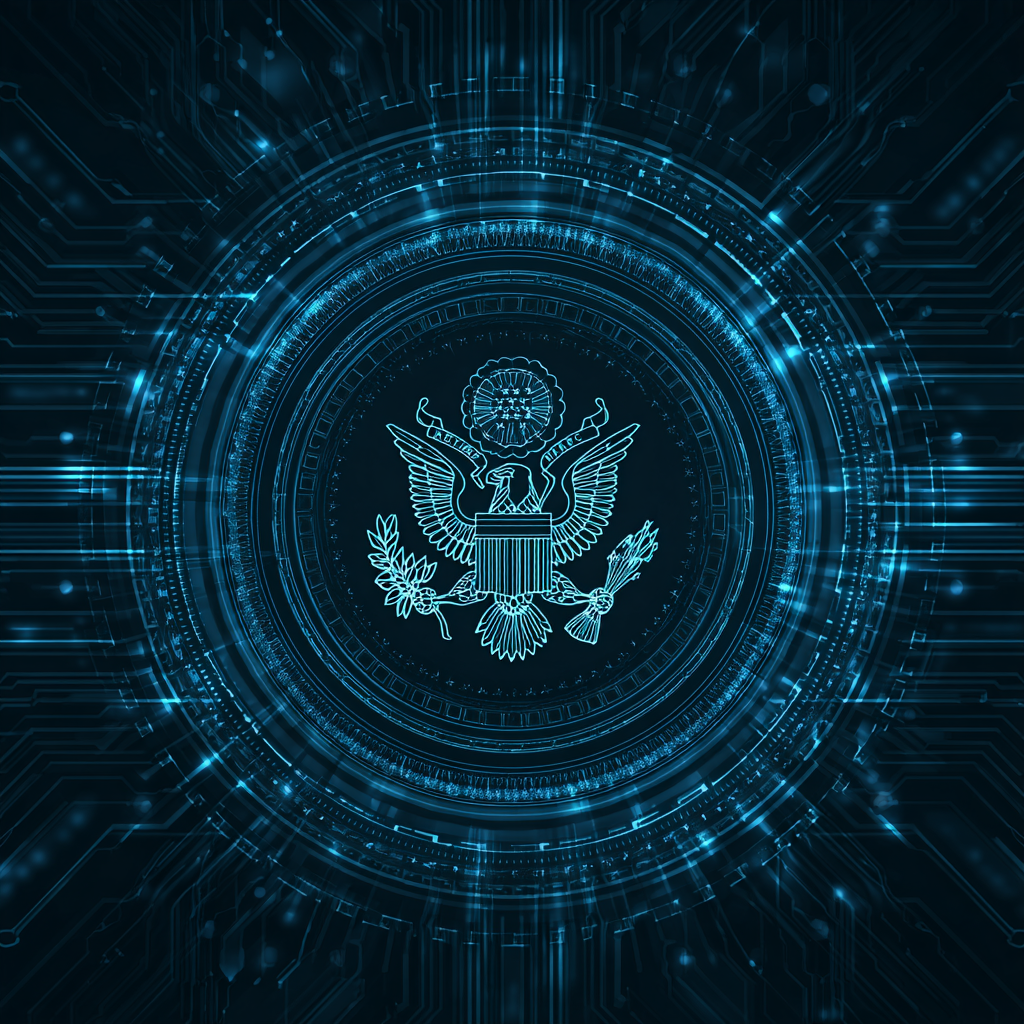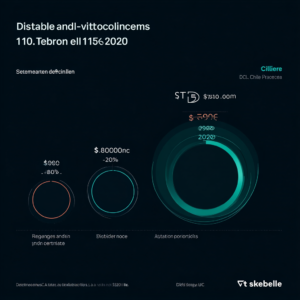
Exploring Public Feedback: U.S. Treasury’s Move to Integrate Digital Identity in DeFi to Fight Illicit Finance
In a world where digital currencies twirl and somersault through financial cyberspace, the U.S. Department of the Treasury has decided to take a bold step into the murky waters of decentralized finance, or DeFi as the cool kids call it. They're not just dipping their toes here; they’re diving in headfirst, splash and all. And what are they carrying with them? A shiny new tool called digital identity verification. Yes, folks, it appears that the future of finance is about to see a serious makeover, and they want your two cents.
Now, let’s clarify. This isn’t just a whim; this is part of the newly minted Guiding and Establishing National Innovation for US Stablecoins Act, or the GENIUS Act for short (and who doesn’t want to be part of something genius?). The act mandates that the Treasury explore new compliance technologies—think artificial intelligence, blockchain monitoring, and of course, digital ID systems. They’ve opened their ears wide and are inviting the public to chime in with thoughts and ideas until October 17, 2025. No pressure, right?
At the heart of the Treasury’s ambitious foray is the ingenious idea to bake identity checks directly into DeFi smart contracts. Imagine a world where, before you can even click “Confirm” on that transaction, your digital identity credentials are verified, all thanks to some snazzy code wrapped in a smart contract. Say goodbye to the old days of paper trails and centralized exchanges. This is a futuristic world where you get to strut around with a virtual ID and engage in financial tango completely without the safety net of banks.
But what do these big ideas actually look like? Well, let’s break it down into tasty, bite-sized pieces for better digestion:
-
Government-Backed Digital Identity System: Yes, this might mean your driver’s license, passport, or possibly even biometric data will play a role in how you transact online. Government credentials can help pave the way for a verified identity system that reassures all the financial watchdogs in the room.
-
Embedded Identity Verification in Smart Contracts: This is where the magic happens. By weaving digital ID validation directly into the code of DeFi platforms, the Treasury aims to ensure compliance checks are triggered real-time, right when the action happens. It’s all about catching those pesky rule-breakers before they can slip through the cracks.
-
Use of Emerging Technologies: Buckle up! The Treasury doesn’t just want any old tech; they want the cutting-edge stuff—APIs, artificial intelligence, blockchain monitoring—anything that can amp up compliance and lend more transparency to transactions. Think of it as upgrading from karaoke to a full-blown concert with lasers and smoke machines.
-
Privacy Considerations: It’s a tightrope walk, folks. On one side, we have a robust regulatory framework and on the other, the urge to snatch up users' privacy like a cookie jar left open. The balance here is crucial; nobody wants to feel like their every move is being tracked as if they were in a reality show.
-
Stakeholder Engagement: The Treasury is casting a wide net here, calling on industry players, consumer advocates, privacy enthusiasts—you name it. It’s an open forum where participation is encouraged, all in an effort to create rules that stimulate growth without sacrificing accountability.
Now, it’s one thing to have these groundbreaking ideas thrown around in the halls of power; it’s another to contemplate what they genuinely mean for the DeFi landscape. The Treasury’s initiative is a direct response to the risks swirling around DeFi—namely, the anonymity that allows illicit finance to flourish unchecked. An enticing new scheme that includes digital IDs could:
- Ramp up Anti-Money Laundering (AML) compliance by catching suspicious activities before they escalate into fiery catastrophes on the blockchain.
- Slash compliance costs for financial institutions and DeFi players by automating what has traditionally been a painstakingly manual process.
- Potentially bolster privacy protections, as users might just find themselves in the driver’s seat regarding their own data—quite the win-win if you ask me.
But hang on a second. Every rose has its thorn, and this proposal brings with it a laundry list of challenges. Here’s where it gets spicy:
-
Data Privacy Concerns: The tug-of-war between efficient verification and protecting users’ privacy is ever-present. If the right security measures aren’t in place, those digital IDs could become more trouble than they’re worth.
-
Risk of Innovation Stifling: Now, if the regulations are too draconian, it could snuff out the creative sparks that keep the DeFi engine chugging along. When innovators feel confined, they might just flee to friendlier regulatory turf.
-
Market Impact: Those in traditional finance are raising the alarm bells, warning that regulatory loopholes within stablecoin protocols related to DeFi could send shockwaves through banks, destabilizing their operations. With trillions at stake, the aftershocks could reshape the credit landscape.
All of this groundbreaking enthusiasm springs from the GENIUS Act, which passed into law back in July 2025. This act did more than just add another bureaucratic layer; it laid out a framework to oversee payment stablecoins while subtly nudging the Treasury to examine innovative compliance technologies. A recent case mentioned by the Treasury showcased how a repo transaction between Bank of America and Citadel Securities exemplified the potential for seamless digital ID integration in finance. Welcome to the future, right?
This initiative marks a pivotal moment in defining U.S. policy towards digital currencies, making room for collaborative governance that acknowledges the chaotic yet thrilling world of blockchain finance. Analysts are optimistic that this could set a ripple effect, encouraging other nations to rethink their own policies on financial anonymity in the digital asset realm.
So, how can you factor into this whole public consultation process? The Treasury is calling for comments and recommendations about digital identities and their seamless integration into the complex web of compliance strategies aimed at overcoming illicit finance. Don’t wait; dust off those keyboard warriors and share your thoughts before the deadline hits on October 17, 2025. Once the feedback rolls in, the Treasury will compile it, whip up a report for Congress, and who knows? Perhaps we'll see some substantial changes roll out in regulatory guidance and rules.
For further reading on this enthralling development—hey, the more you know, right?—check out the links below.
And remember, if you want to keep your finger on the pulse of all things neural networks and automation (and let’s be honest; who wouldn’t?), join the cool kids’ club by subscribing to our Telegram channel: @channel_neirotoken. Don’t miss out on the latest trends; get all the juicy details without lifting a finger!

